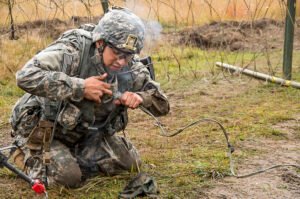Everglades Fire
The Florida Everglades Fire is one of the most unique ecosystems in the world, stretching across more than a million acres of wetlands, prairies, and forests. It is home to rare wildlife such as the Florida panther, American crocodile, and countless bird species. But in recent weeks, the Everglades has been in the spotlight for another reason: fire.
Wildfires are not new to the Everglades. In fact, fire is a natural part of this ecosystem, shaping the landscape and helping to maintain a balance between plants and wildlife. Still, when flames grow larger than expected or occur during extreme drought, they can threaten nearby communities and disrupt fragile habitats.
Table of Contents
Why Fires Happen in the Everglades
The Everglades is a mix of sawgrass marshes, tree islands, and pine rocklands. These habitats are highly adapted to seasonal burning. Natural fires, often sparked by lightning during summer thunderstorms, clear away dead vegetation and allow new growth. Some plant species even depend on fire to release seeds.
However, not every fire is natural. Human activity plays a growing role. Campfires, discarded cigarettes, or intentional burns that get out of control can all spark wildfires. Climate conditions also add fuel to the problem. Drier winters, higher temperatures, and fluctuating rainfall patterns leave large stretches of land vulnerable.
Recent Everglades Fire Events
In the past few years, large fires in the Everglades have drawn national attention. Thousands of acres have burned in Broward and Miami-Dade counties, sending smoke into highways and neighborhoods. At times, road closures along major routes like Alligator Alley were necessary because of reduced visibility.

These incidents highlight how fire in the Everglades doesn’t just affect the wilderness. It directly impacts residents, drivers, and businesses in South Florida. The smoke can also pose health risks, particularly for people with asthma or other respiratory conditions.
The Ecological Role of Fire
While images of flames and smoke may look alarming, fire is not always destructive in the Everglades. Controlled burns and natural wildfires are essential for keeping the ecosystem healthy.
- Preventing overgrowth: Without fire, sawgrass and shrubs would overtake open wetlands, leaving less space for wading birds and aquatic life.
- Supporting rare species: Pine rocklands, one of the rarest habitats in Florida, need fire to survive. Without it, invasive plants crowd out native species.
- Restoring balance: Fire recycles nutrients back into the soil, giving new plants a chance to thrive.
The challenge comes when fires burn too hot or spread too quickly, often due to drought or human interference. That is when ecological benefits turn into potential disasters.
Community and Safety Concerns
For residents near the Everglades, safety is always a concern during wildfire season. Local fire departments and state agencies closely monitor conditions, using helicopters and ground crews to control flames. Firefighters often set backfires—controlled burns in strategic areas—to stop wildfires from spreading.
Authorities also issue air quality warnings when smoke drifts into populated areas. These advisories help families decide when to limit outdoor activity. For many communities, especially those on the edges of the Everglades, staying alert is part of life during the dry season.
Climate Change and the Future of Fires
Scientists warn that climate change could make Everglades fires more intense. Rising temperatures and shifting rainfall patterns may lead to longer dry seasons. At the same time, sea-level rise threatens to push saltwater into freshwater habitats, stressing plant life and making it more flammable.
Managing these challenges requires careful planning. Agencies like the National Park Service, the Florida Forest Service, and local governments are working together to track fire risks, restore natural water flows, and educate the public about prevention.
What Can Be Done
Protecting the Everglades from harmful fire events will take a mix of strategies:
- Controlled burns – Planned fires reduce fuel buildup and lower the risk of catastrophic wildfires.
- Public awareness – Residents and visitors need to follow safety guidelines, such as never leaving campfires unattended.
- Restoration projects – Efforts to restore natural water flow through the Everglades can reduce drought conditions that make fires worse.
- Community planning – Building smarter infrastructure and preparing emergency response systems helps keep people safe.
Also Read: WORLD WIDE NEWS
Conclusion
The Everglades fire story is not one of simple destruction. Fire is a natural and even necessary part of this ecosystem. But when flames grow beyond control, they remind us of the delicate balance between people, nature, and climate.
As Florida faces the future, managing fire in the Everglades will be a key part of protecting both wildlife and communities. By combining science, policy, and public responsibility, it is possible to keep this iconic landscape resilient for generations to come.














